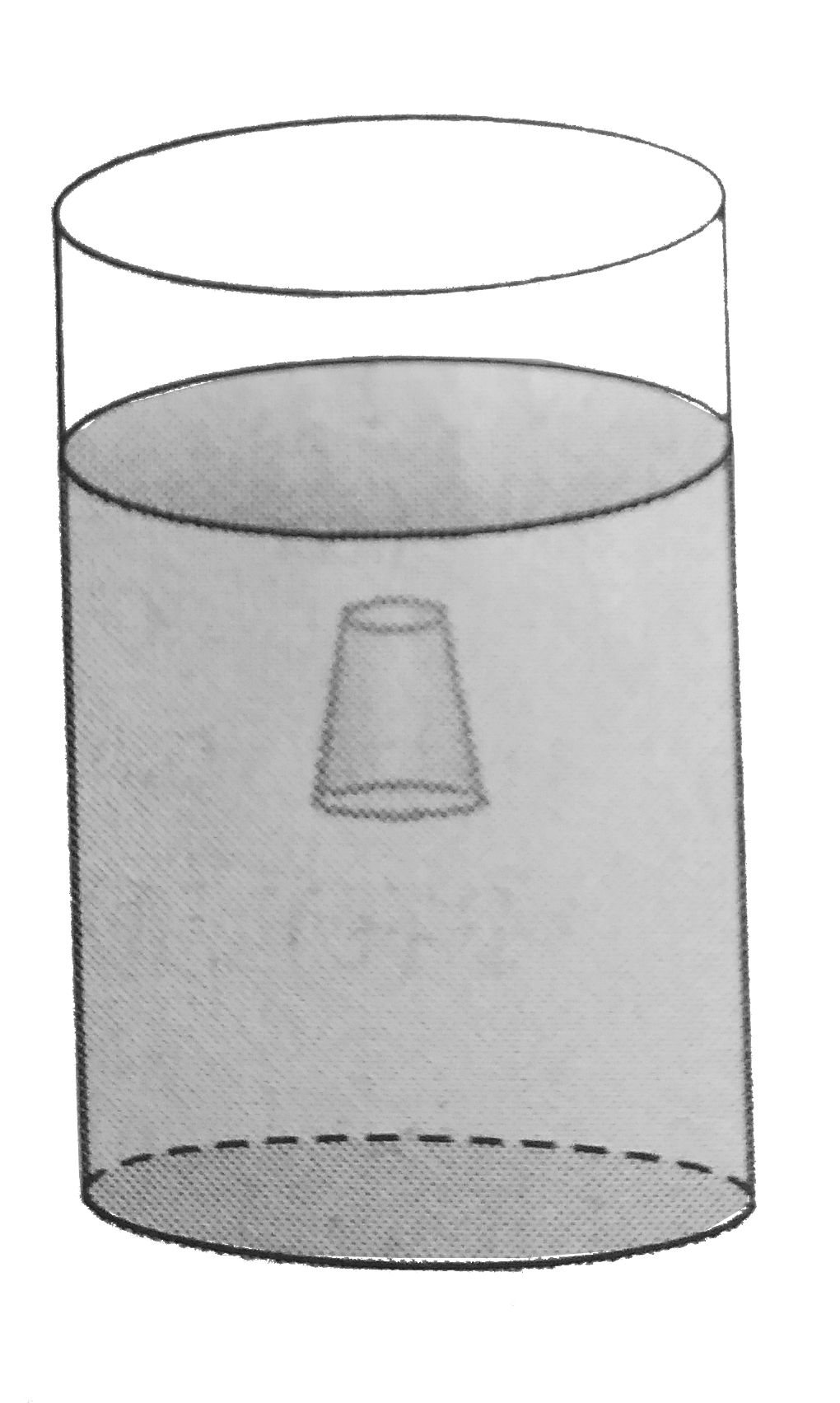When a gas jar full of air is placed upside down on a gas jar full of bromine vapours, the red-brown vapours of bromine from the lower jar go upward into the jar containing air. In this experiment:
Air is heavier than bromine
Both air and bromine have the same density
Bromine is heavier than air
Bromine cannot be heavier than air because it is going upwards against gravity
The correct Answer is:C
समान प्रश्न
An empty glass jar is submerged in tank of water with open mouth of the jar downwards, so that air inside the jar is trapped and cannot get out. As the jar is pushed down slowly, the magnitude of net buoyant force on the system of volume of gas trapped in the jar and the jar.

View SolutionIn a closed jar having water vapours in equilibrium with liquid suddenly all the vapours of the jar is transferred to another identical jar and is subjected to compression.Assume initial temperature to be the same and negligible volume occupied by the liquid water.Select the observation in the record jar.
View SolutionA gas jar contains 1.7 g of ammonia gas. Calculate the following: a) Number of moles of ammonia present in the gas jar.
View SolutionWhen a gas jar full of air is placed upside down on a gas jar full of bromine vapours, the red-brown vapours of bromine from the lower jar go upward into the jar containing air. In this experiment:
View Solutionഗ്യാസ്ജാറിലെ വായുവിനെ മുകളിലേക്ക് ആദേശം ചെയ്താണ് ക്ലോറിന് ശേഖരിക്കുന്നത്ല.ഭിച്ച ക്ലോറിന്വാതകത്തെ ജലത്തിലൂടെ കടത്തിവിടുന്നതെന്തിനാണ്?
View SolutionA jar contains a gas and a few drops of water. The pressure in the jar is 830 mm of Hg. The temperature of the jar is reduced by 1%. The vapour pressure of water at two temperatures are 30 and 25 mm of Hg. Calculate the new pressure in jar.
View SolutionThe diagram shows the apparatus set-up for an experiment. Gas jar ( A) contains a brown gas, nitrogren dioxide and gas jar ( B) contains hydrogen > The molecular masses of nitrogen dioxide and hydrogen are 46 and 2 respectively.

Describe and explain the follwoing observations in the two gas jars as the experiment proceeds.
The colour of the gas.
View Solution
